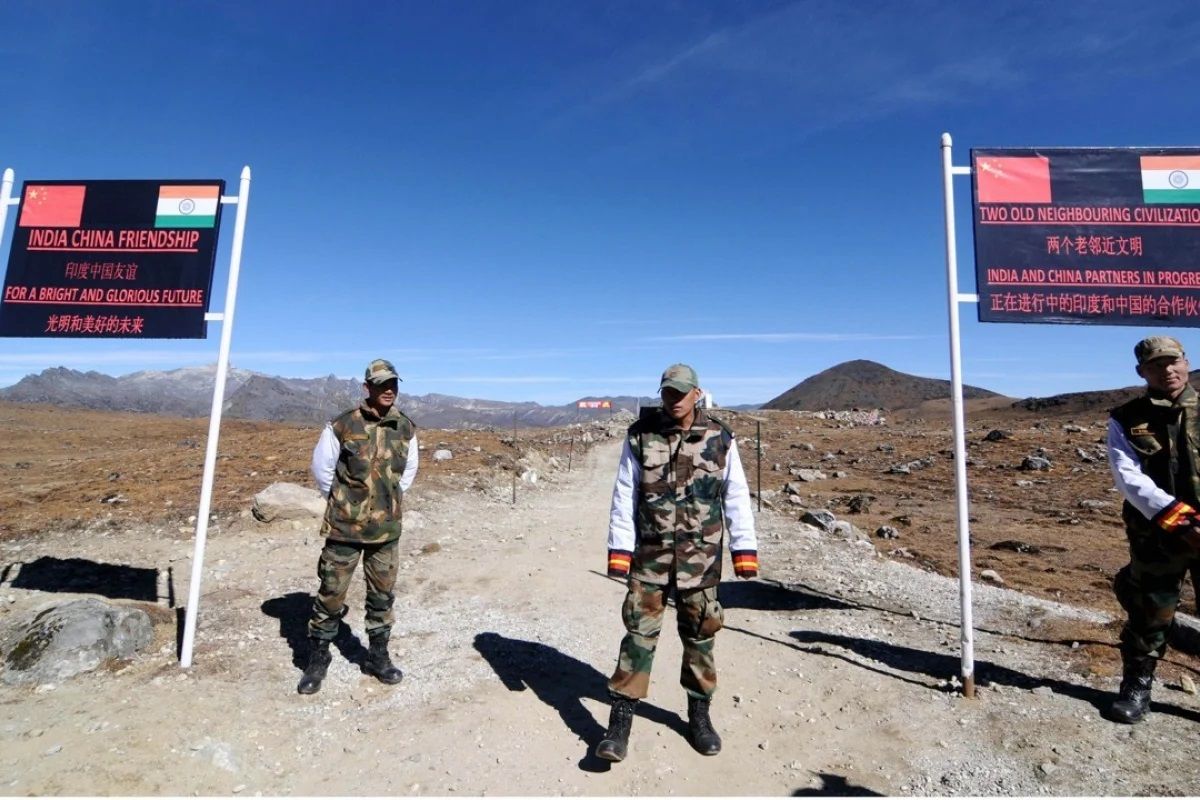India and China have agreed to “peacefully resolve” the resolve impasse between the two military forces in eastern Ladakh region along the Line of Actual Control (LAC), in accordance with various bilateral agreements, said the the Ministry of External Affairs (MEA)on Sunday.
The Foreign Ministry emphasised that military and diplomatic dialogue will continue to resolve the situation between the two countries. This comes a day after India and China military top brass held talks on Saturday in a bid to resolve the standoff and de-escalate forces in eastern Ladakh region.
“The two sides will continue the military and diplomatic engagements to resolve the situation and to ensure peace and tranquility in the border areas,” the Ministry said in a statement.
The talks were requested by India and were held in Moldo in China opposite Chushul in Ladakh sector yesterday.
“Both sides agreed to peacefully resolve the situation in the border areas in accordance with various bilateral agreements and keeping in view the agreement between the leaders that peace and tranquility in the India-China border regions is essential for the overall development of bilateral relations,” the Ministry said.
14 Corps Commander Lt Gen Harinder Singh held the Lieutenant General-level talks with Maj Gen Liu Lin who is the commander of South Xinjiang Military Region of Chinese People’s Liberation Army, on Saturday. The talks were requested by India in Moldo in China opposite Chushul in Ladakh sector.
It took place in a “cordial and positive atmosphere”, the ministry said.
“Both sides also noted that this year marked the 70th anniversary of the establishment of diplomatic relations between the two countries and agreed that an early resolution would contribute to the further development of the relationship,” added the Foreign Ministry.
The MEA said that “both the countries have agreed that an early resolution would contribute to the further development of the relationship.”
The two sides have already held at least 10 rounds of negotiations between local commanders as well as major general-rank officials of the two armies, but the talks did not yield any positive result.
Division Commander Level Meeting was held between the Major General rank officers of the two sides on Tuesday afternoon to resolve the issue but in the end it remained “inconclusive”.
As Indian and Chinese troops remained engaged in a tense border standoff, Defence Minister Rajnath Singh on Saturday asserted that the government will not allow India’s pride to be hurt under any circumstances even as he said bilateral talks were on at military and diplomatic levels to resolve the row.
Several areas along the LAC in Ladakh and North Sikkim have witnessed major military build-up by both the Indian and Chinese armies recently, in a clear signal of escalating tension and hardening of respective positions by the two sides even two weeks after they were engaged in two separate face-offs.
The nearly 3,500-km-long LAC is the de-facto border between the two countries.
Indian and Chinese troops have remained engaged in an eyeball-to-eyeball situation in several areas along the LAC in eastern Ladakh, signalling that the standoff could become the biggest military face-off after the Doklam crisis in 2017.
The trigger for the face-off was China’s stiff opposition to India laying a key road in the Finger area around the Pangong Tso Lake besides construction of another road connecting the Darbuk-Shayok-Daulat Beg Oldie road in Galwan Valley.
Military sources said China was also laying a road in the Finger area which is not acceptable to India.
After the standoff began early last month, the Indian military leadership decided that Indian troops will adopt a firm approach dealing with the aggressive posturing by the Chinese troops in areas of Pangong Tso, Galwan Valley, Demchok and Daulat Beg Oldie.
Meanwhile, earlier on Wednesday, China reportedly made a slight retreat at Galwan Valley, one of the flashpoints leading to standoff with India, in Ladakh region, in a bid to resolve the border tension between the two nations.
The China’s People’s Liberation Army moved back two kilometres while the Indian Army has moved back by one kilometre.











